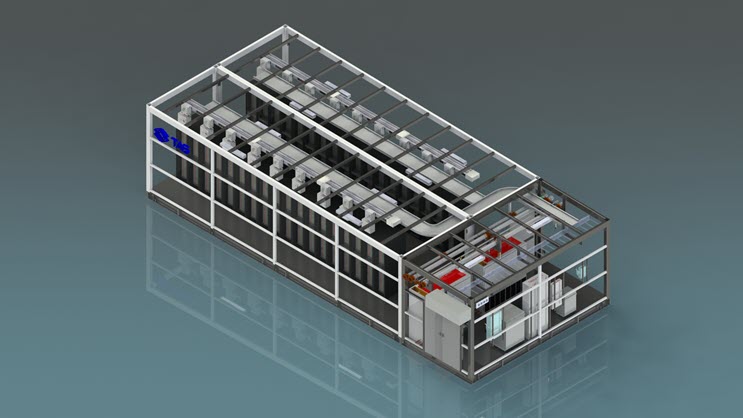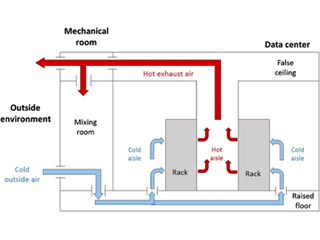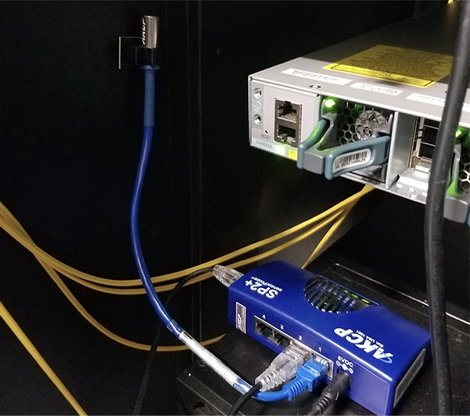Innovations in data centers, pursuing better performance and scale is a primary consideration for many data center operations. Keeping pace with developments means data centers are redesigning their operations for increased efficiency, lower carbon footprint and decreased operational expenses. Modular designs highlight the optimum potential for scale. This includes integrating scalable equipment to overhaul operations. Scalable modular data centers are a proper response to industry development. Modular and scalable data centers are at the forefront of this innovation and engineering design movement.
Adopters Of Scalable Modular Data Centers

Photo Credit: www.parkmycloud.com
The modular market is at its maturity in terms of breadth and scale. Even large organizations are integrating scalable modular data centers in their operation. Industry adoption has been fast because modular solutions respond to the demand of enterprises.
- Internet Players
The rapid evolution of internet usage has demanded better data computing support for internet companies. Cloud providers cannot carry out deployment given a lone-standing data center. To optimize operation and performance, utility-scale implementation is the impetus.
Responding to the fast data turnover from internet operations, data infrastructures should be quick and easy. This can be sustained by enabling thousands of servers at a time.
- National And Federal Institutions
Governance requires significant data input and output. As such, governments are investing in IT innovations to better governmental approaches. In developing technologies to improve efficiency, some agencies enact policies on optimizing data centers, IT, and cloud-hosting as part and parcel of an organizational redesign. This paved the way for data center customization dependent on agency needs. Hence, modular data centers are the new IT route for many governmental IT development.
- Enterprise
As the market grows, many large enterprises must subscribe to the demand to gain leverage in the industry. In line with data centers, some large enterprises invest a ton in managing a big data center footprint. This would cause them million on utility bills.
As the enterprise grows, the need for a better data center also follows. The modular data center allows many of these enterprises to keep pace with the current trend in the industry. Integrating a scalable data center alternative ensures response to market demands.
- Finance Industry

Photo Credit: i.insider.com
As an early adopter of the modular strategy, financial institutions are a prime example of responding to the current market demand. Handling a vast portfolio, many financial firms would need extensive square footage on traditional data center infrastructure.
Even with an established financial conglomerate, this is a hefty overhead. The modular approach offered a new way of data operations. Deploying standard components of a data center following a module has gained better rewards for many financial institutions. It also gave way for better power and cooling turnout.
These adopters realized that a modular approach is one way to improve their services. With the massive demand for digital products, supply the requirements is of prime consideration. Delivering sufficient capacity to the market entails better behind the scene operations. This is where a modular option can provide better resolution.
Debunking Modular Hesitation
However, despite concrete evidence, there is still hesitation around modular adoption. As much as modular products are matured and can fill up the digital space, adoption seems to plateau.
-
Massive Investment
There is no denying that modular data centers will need investment. But view this as a way of adapting to changing technology. The growing demands for more computing capacities will justify the capital cost. In a way, the investment will ensure the following:
-
Operating Expense
In an attempt to optimize data center operations, efficiency gains can be seen from lowering power consumption. The architecture of built-in modules also fortifies an efficient operating subsystem, lowering expense.
-
Chunking Resources
Unlike a regular data center that needs building up from the ground, a modular data center will only require upfront capital depending on the modular requirement build. Expansion is part and parcel of a modular data center. As such, giving sufficient time to save for additional investments. More than that, it reduces the strain of building a rather unnecessarily big data center.
-
Modular Solutions Are Equipment
Modular solutions are not classified as building. Instead, they are considered equipment. This is where the rate of depreciation becomes a vital investment factor. With a favorable return on investment, modular solutions can positively impact your finances.
- Complicated Operations
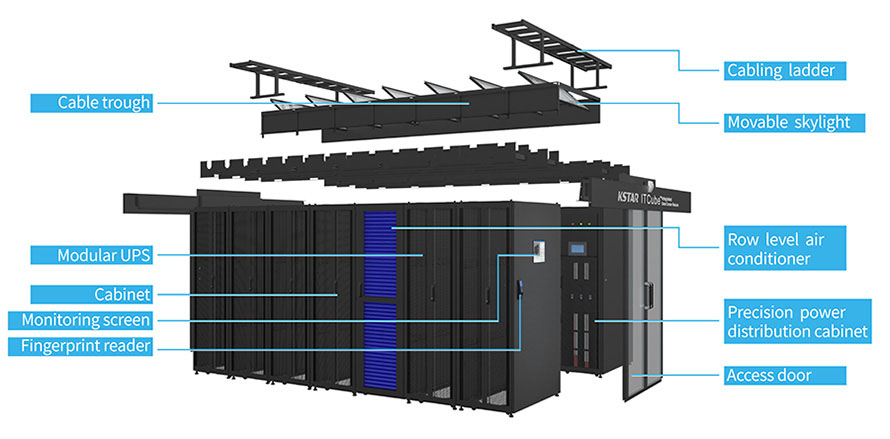
Photo Credit: www.mastec.co.nz
The computing industry follows a very instantaneous flow of industrialization. What can work now may not work tomorrow. Because of this nature, module solutions subscribe to standardizing the build-up of data centers. This means there are set models to build a modular data center. Because all is standardized, operating procedures are uniform because of a set prefabrication prerequisite. Another critical standard approach is the limited need to acquire contract support. The standard architecture enables little professional support to run the whole system.
-
Rightsizing
With a modular data center, specific IT needs are met. In a broad industry, finding the right solutions according to data strategies is of utmost necessity. The modular method offers the right size of IT infrastructure according to a specific data center approach. What makes this a probable resource? Expansion and capacity adjustments require additional investment. In a scalable modular data center, there are right-size components that can be utilized that will not compromise scale.
The Digital Movement
Modular solutions also keep pace with digitalization as a primary mover of data center systems. However, the critical competitive edge is that modular designs are digital but more scalable. In what manner can they offer digitalization through scale? This is done by using software through remote configuration. This is contrary to the basic hard-wiring of traditional data centers.
To follow the digital movement, scalable modular data centers subscribe to communication standards in automation. This is the IEC 61850. A well-establish mode of communication that comes with digitization assets like reliability, diagnostics, and fault tolerance. The IEC 61850 is integrated into a modular data center setting to enable communication through devices. For example, IEC 61850 enabled device can connect with the power system in the data center for better automation. When this happens, operational control is maximized. Power reliability is ensured.
The move to integrate IEC 61850 is a design consideration for many Gen 2 modular data centers. It is part of the efforts to eliminate unnecessary processes and streamline operations. While IEC 61850 is directly correlated to enabling power supply infrastructure, some of its inherent protocols can be used for other data center operation requirements. Typical of this is optimizing cybersecurity. In a way, the capacity of IEC 61850 to link with other data center operating systems enhances the optimization of other digital components.
Comprehensive Modular Data Center
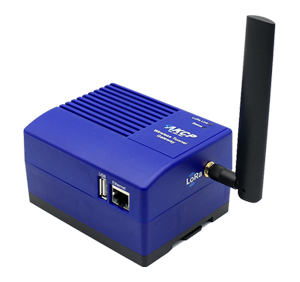
Because modular solutions are agile, right-sizing other components in the data center is easier. Beyond power and operational efficiency, other data center solutions are required. This includes monitoring and security solutions.
The AKCP wireless monitoring solution provides a comprehensive supplement to the whole modular system. The solutions
are adaptive to specific requirements, offering scalability and flexibility. AKCP monitoring solutions include power, thermal management, and environmental monitoring. Owing to the smooth-out integration process, AKCP solutions are pre-integrated and calibrated. This means a short deployment period and limited on-site work.
-
AKCP Power Monitoring Sensor
AKCP power sensor provides vital information while monitoring power remotely. This negates the need for manual power audits. Moreover, the sensor can provide alerts when potential problems occur. The AKCP power monitor can also be used with AKCP sensorProbe+ and securityProbe base units. Enabling this connection can magnify more monitoring prowess such as:
- Monitoring Phase Line Voltages
- Monitoring and measuring:
- Current
- Power Factor
- Active Energy
- Active Power
-
Wireless Tunnel Gateway
The wireless tunnel gateway can collect and store data from up to 30 sensors deployed to facilitate communication to sensors. It can be used as a standalone solution to monitor data center components. As such, a cloud server or internet connection is not necessary. The embedded interface can provide mapping graphing visibility to users.
-
AKCPro Server
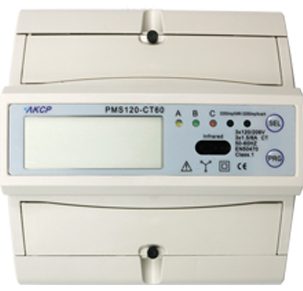
Power Monitoring Sensor
Suppose a modular data center requires multiple expansions, adhering to enormous component infrastructure. In that case, AKCP has a monitoring platform that fits the bill. It combines data from all reached gateway. The AKCPro Server can be run in-house or hosted through a cloud. Ultimately, the AKCPro Server functions as a Data Center Infrastructure Management (DCIM) platform that can integrate with AKCP sensors on the ground.
The data center industry has seen rapid innovation and engineering in the past years. Because of the scalable promise of modular solutions, more and more industry players utilize it as a rudimentary operational system. A scalable modular data center promises better operational capacities with quick and easy implementation as it matures.
The rationale behind modular modernization is to gather significant operation ROI. The use of it does not only impact the operation. It also magnifies its adoption quality serving the proper purpose for a data center. But enabling a fully modular and scalable one will also need scalable components. As such, monitoring units will need to adhere to the same level of scalability. Completing that puzzle will comprehensively optimize a top-of-the-line scalable modular data center.
Reference Links:
https://datacenterfrontier.com/scalable-modular-data-centers-and-the-race-to-roi/

